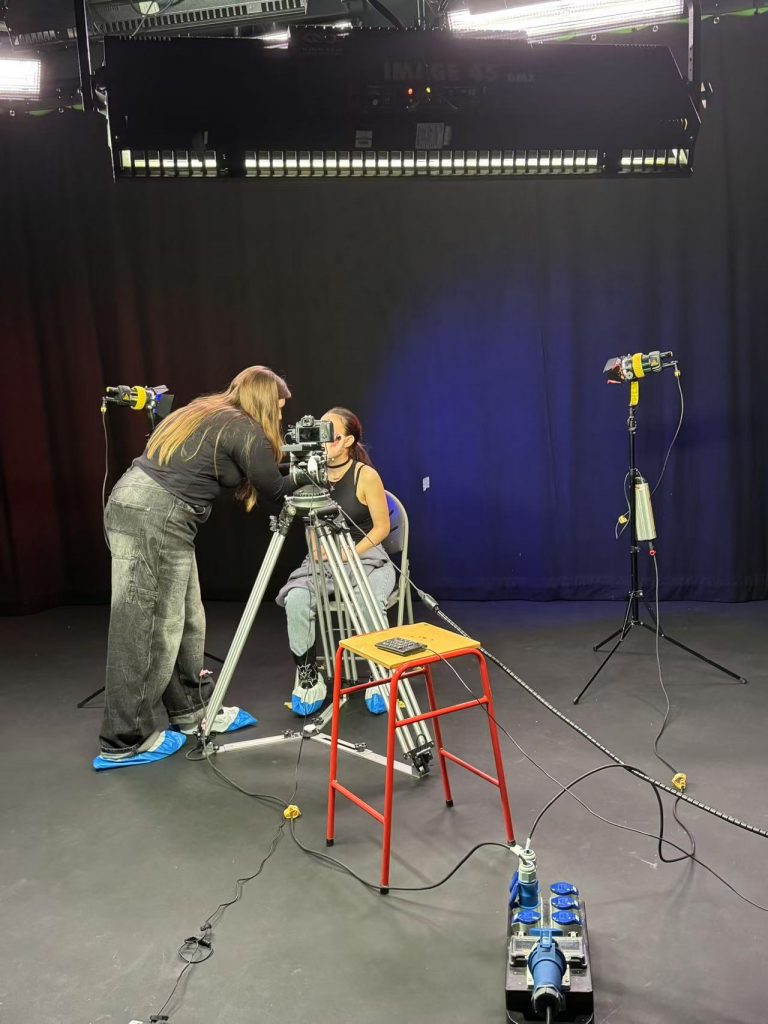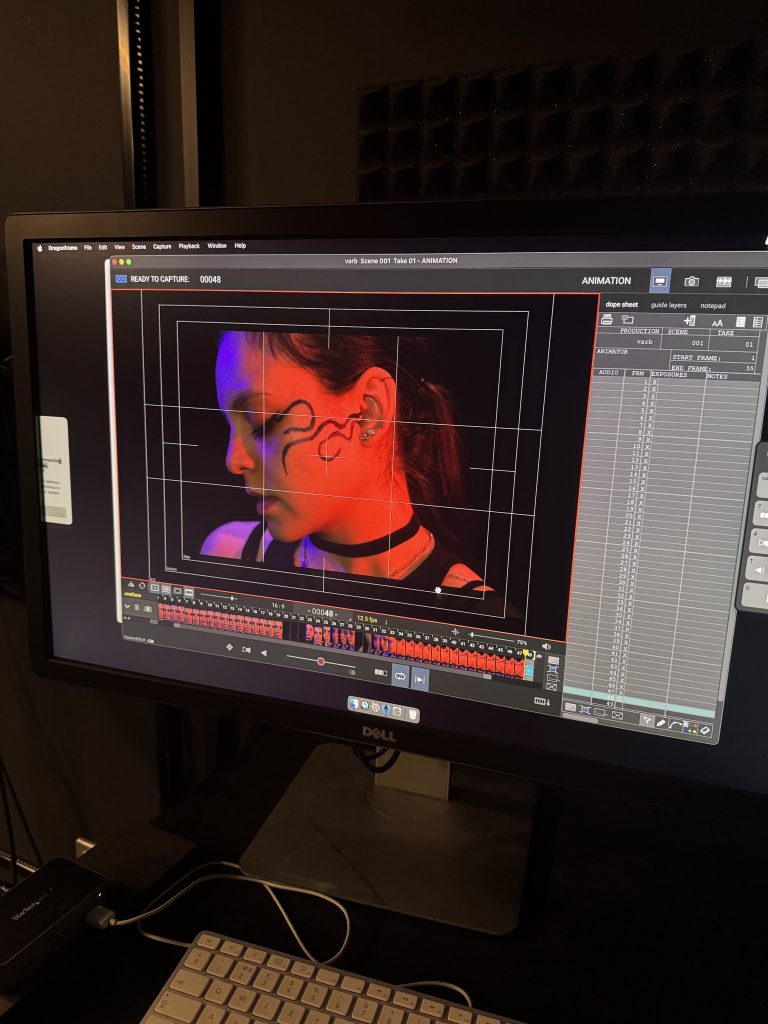For simulated work, I assisted Verbinka for her stop-motion project animated with makeup and body paint on a real human model and finally becoming full body character animation in 2D. I was mainly involved in the pre-production and stop-motion stages.
Since the script is in the form of poetry, in the process of animatic drawing, I need to transform the abstract psychological themes (being judged, struggling with myself) into concrete pictures based on body painting. The core difficulty of this process is how to use the fluidity of painting as a canvas to express internal emotions. Pattern deformation is used to externalize the transition from “internalized pressure” to “release”. I focused on the visual connection between the painted elements and the later 2D animation to ensure the logical transition of the medium.

Despite having experience in traditional stop-motion animation, this time using live models as subjects brought new challenges. The main difficulty lies in continuity maintenance, because the model cannot remain absolutely still like an inanimate object, when shooting close-up, model’s subtle movements will be enlarged and may influence the lighting effect on face and cause problems in the stability of the picture. To cope with this, I strictly relied on the onion skin to compare the difference between the action and the front and back frames during the shoot, and needed to frequently adjust the small shifts in the model’s posture and expression. This unique practical experience made me deeply realize the complex operation requirements brought by using the living body itself as the animation carrier, and also made me feel the unique performance potential contained in it.

The use of professional studio equipment for the first time made me deeply realize the key role of lighting in the picture narrative. Specifically, by assisting in the arrangement of light sources, I observed that different angles, color temperatures and intensities of light can effectively enhance the texture and layering of body painting. At the same time, I learned that lighting design can directly serve the creation of the theme atmosphere, such as the use of shadows to create a sense of depression, the warm and cool lights on both sides simultaneously, expressing inner conflicts and a sense of division. This practice made me clearly aware of the limitations caused by the neglect of lighting in my personal stop-motion animation works before, while professional lighting techniques can significantly improve the overall texture of the picture.
Leave a Reply